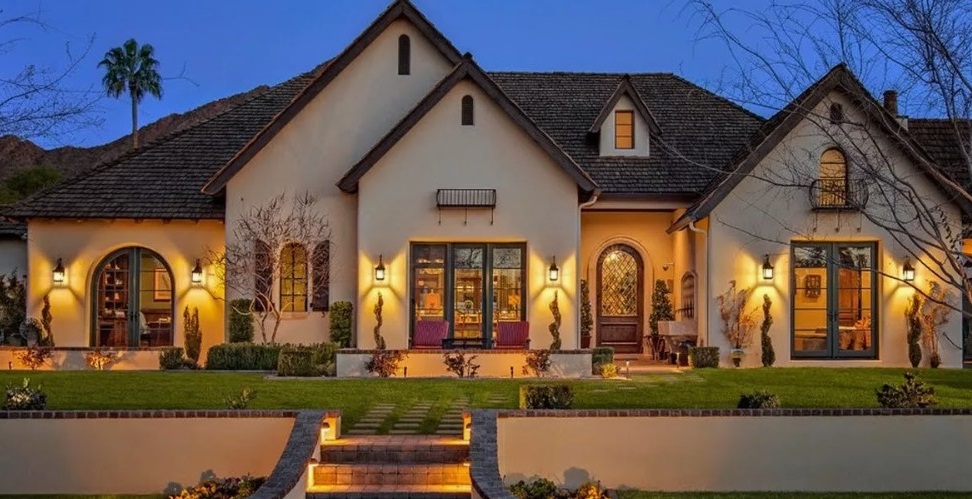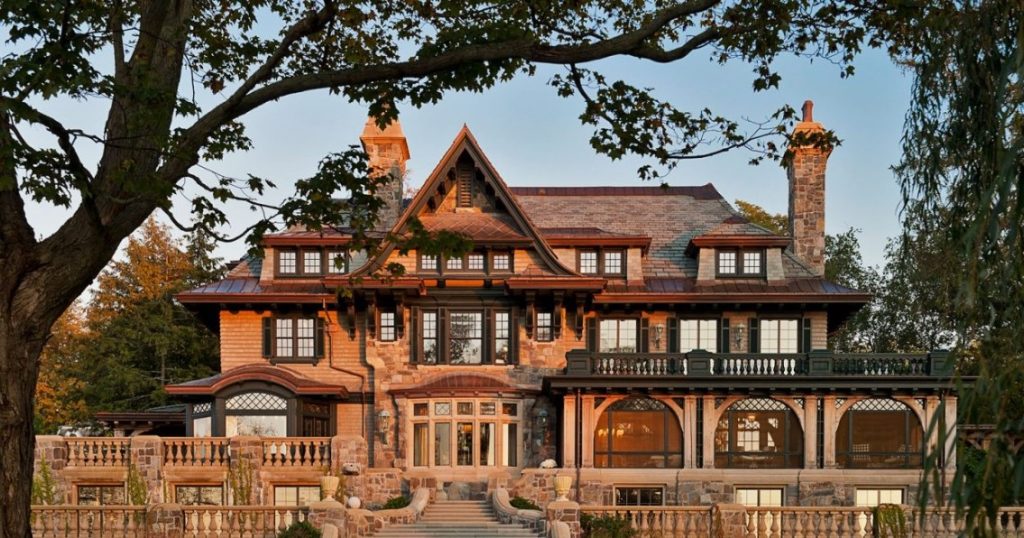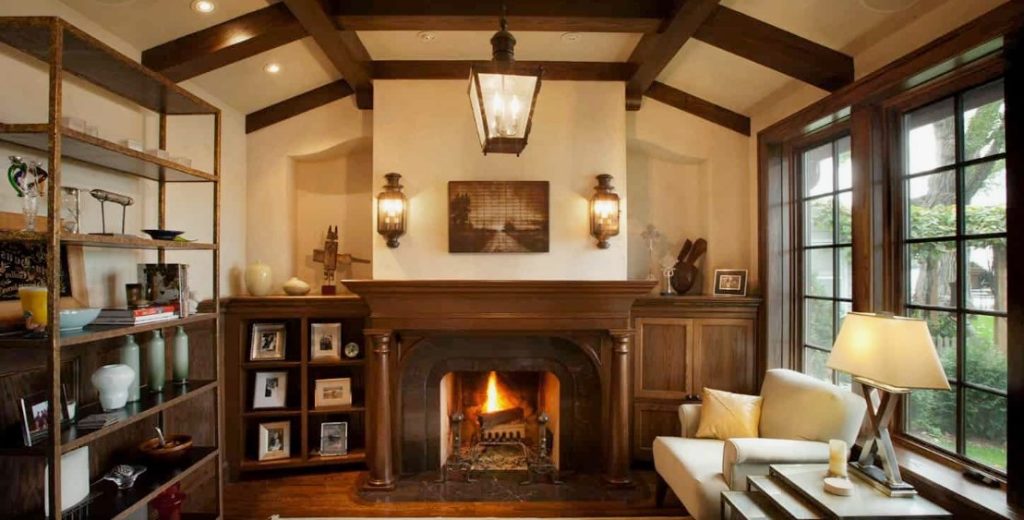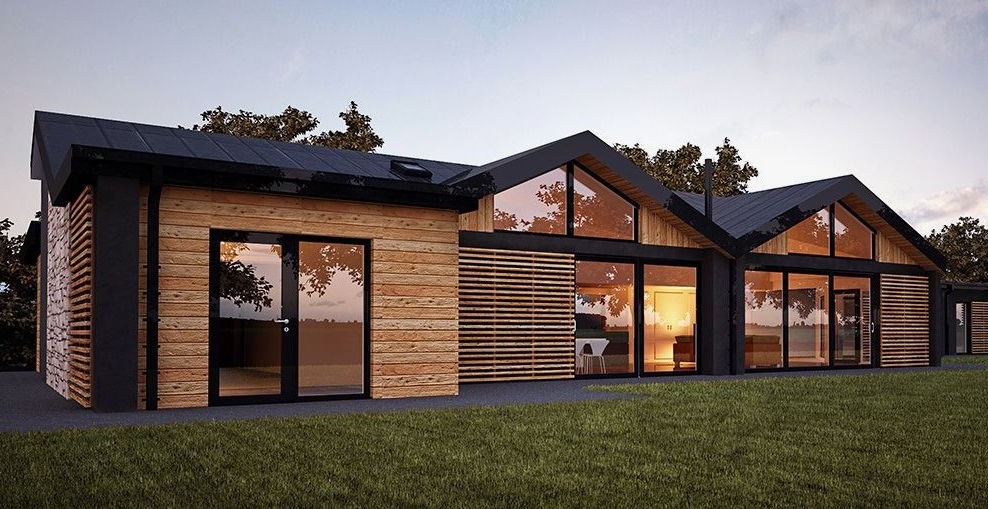
traditional european houses refer to architectural styles and structures that have been characteristic of European regions over centuries. These houses often feature distinct design elements, materials, and construction techniques that are reflective of cultural, historical, and regional influences.
Traditional European architecture holds significant cultural, historical, and architectural value. It serves as a testament to the heritage and identity of European communities, showcasing the evolution of architectural styles, craftsmanship, and societal values over time. Furthermore, these structures contribute to the visual landscape, tourism, and economic vitality of European cities and towns.
Table of Contents
Historical Overview
A. Origins and Development
The origins of traditional European houses can be traced back to ancient civilizations such as the Greeks and Romans, whose architectural principles and techniques influenced subsequent European architectural styles. Over time, as various kingdoms, empires, and cultural groups emerged across Europe, distinct regional architectural styles began to develop, characterized by differences in materials, building methods, and ornamentation.
B. Influence of Geography and Climate
Geography and climate have played a significant role in shaping traditional European architecture. For instance, in regions with abundant timber resources, such as Scandinavia and Central Europe, timber-framed construction became prevalent. In contrast, areas prone to seismic activity or harsh weather conditions often utilized stone or brick for greater structural stability. Furthermore, the layout and design of traditional European houses often responded to climatic factors, with features such as thick walls for insulation, steep roofs to shed snow, and small windows to conserve heat in colder climates. These considerations resulted in a diverse array of architectural styles across Europe, each uniquely adapted to its local environment and cultural context.
Architectural Styles

A. Tudor Style
The Tudor style, originating in England during the Tudor period (1485-1603), is characterized by its timber-framed structures with steeply pitched roofs, decorative half-timbering, and intricate woodwork. Tudor houses often feature asymmetrical facades, tall chimneys, and leaded glass windows. This style evokes a sense of charm and historical elegance, reflecting the craftsmanship of the Tudor era.
B. Victorian Style
The Victorian style emerged during the reign of Queen Victoria (1837-1901) in Britain and subsequently spread throughout Europe. Victorian architecture is characterized by its eclectic mix of design elements, including elaborate ornamentation, colorful facades, and asymmetrical floor plans. Common features include steeply pitched roofs, bay windows, decorative trim, and intricate ironwork. Victorian houses often exhibit a sense of grandeur and opulence, reflecting the prosperity of the era.
C. Gothic Revival
The Gothic Revival style, popularized in the 19th century, drew inspiration from medieval Gothic architecture. Characterized by pointed arches, steeply pitched roofs, and intricate tracery, Gothic Revival buildings evoke a sense of romanticism and nostalgia for the medieval past. These structures often feature elaborate stone carvings, stained glass windows, and ornate spires, creating a dramatic and imposing aesthetic.
D. Baroque Style
The Baroque style, originating in Italy in the 17th century, is characterized by its ornate decoration, dramatic use of light and shadow, and dynamic, curving forms. Baroque architecture often features grandiose facades, elaborate sculptural details, and opulent interiors adorned with marble, gilt, and frescoes. Common architectural elements include domes, columns, and ornamental flourishes, reflecting the exuberance and theatricality of the Baroque era.
Structural Features
A. Materials Used
Traditional European houses have been constructed using a variety of materials depending on regional availability and cultural preferences. Common materials include timber, stone, brick, and clay. Timber-framed construction is prevalent in regions with abundant forests, while stone and brick are used for their durability and strength in areas where they are plentiful.
B. Roof Types
Traditional European houses exhibit a diverse range of roof types, each suited to the local climate and architectural style. Common roof types include pitched roofs with gables or hips, flat roofs, and steeply sloped roofs with dormer windows. Roof materials vary widely and may include thatch, clay tiles, slate, wood shingles, or metal.
C. Windows and Doors
Windows and doors are important architectural features of traditional European houses, serving both functional and decorative purposes. Windows vary in size, shape, and style, with characteristics such as leaded glass, shutters, and decorative trims. Doors may be elaborately carved or paneled, often serving as focal points of the facade. Both windows and doors contribute to the aesthetic appeal and character of traditional European architecture.
Interior Design

A. Layouts and Room Functions
Traditional European house layouts and room functions vary depending on factors such as cultural norms, social customs, and historical influences. Common layouts may include open-plan living spaces, compact kitchens, formal dining rooms, and cozy bedrooms. Rooms are often designed to serve specific functions, such as entertaining guests, cooking and dining, relaxation, and sleeping. Additionally, multi-functional spaces are common in traditional European homes, allowing for flexibility and efficient use of space.
B. Decorative Elements
Decorative elements play a significant role in traditional European interior design, adding character, warmth, and visual interest to living spaces. Common decorative elements include ornate plasterwork, carved wood detailing, intricate tile patterns, and decorative moldings. Textiles such as curtains, rugs, and upholstery are also used to add color, texture, and warmth to interiors. Additionally, traditional European homes often feature artwork, antique furniture, and family heirlooms, reflecting the homeowner’s personal style and cultural heritage.
Regional Variations
A. Northern Europe
In Classic European dwellings, interior design tends to prioritize functionality, comfort, and coziness. Interiors often feature warm, natural materials such as wood and wool, creating a sense of warmth and intimacy. Traditional Scandinavian design principles, such as clean lines, minimalist aesthetics, and an emphasis on natural light, are common in Northern European homes. Additionally, cozy textiles, such as sheepskin rugs and knitted throws, are used to add warmth and texture to interiors.
B. Mediterranean Region
In the Mediterranean region, interior design is influenced by the region’s climate, culture, and history. Interiors often feature bright, sun-drenched spaces with whitewashed walls, tiled floors, and exposed wooden beams. Traditional Mediterranean design emphasizes outdoor living, with interiors flowing seamlessly into outdoor spaces such as courtyards, terraces, and gardens. Decorative elements such as colorful tiles, wrought iron accents, and ceramic pottery add a touch of Mediterranean charm and sophistication to interiors.
C. Eastern Europe
Eastern European interior design is characterized by a rich blend of cultural influences, reflecting the region’s diverse history and heritage. Interiors often feature a mix of traditional and contemporary elements, with ornate woodwork, elaborate textiles, and decorative motifs inspired by folk art. Traditional Eastern European homes may include features such as painted ceilings, carved furniture, and intricately woven rugs, showcasing the region’s craftsmanship and artistic traditions. Additionally, Eastern European interiors often incorporate elements of religious iconography, reflecting the importance of spirituality and faith in the region’s culture.
Cultural Significance
A. Social and Economic Implications
Traditional European architecture holds profound social and economic significance within communities. Architectural heritage often serves as a focal point for social gatherings, cultural events, and community identity. Additionally, historic buildings contribute to tourism, attracting visitors and generating revenue for local businesses. Preserving traditional architecture can also enhance property values and stimulate economic development in historic districts.
B. Symbolism and Traditions
Authentic European residences is imbued with symbolism and traditions that reflect the cultural identity and values of communities. Architectural features, such as religious symbols, decorative motifs, and craftsmanship, often convey historical narratives, religious beliefs, and cultural practices. Furthermore, traditional building techniques and materials are passed down through generations, preserving craftsmanship and traditional knowledge.
Preservation Efforts
A. Challenges to Preservation
Preservation of traditional European architecture faces numerous challenges, including urbanization, development pressures, neglect, and inadequate funding for conservation efforts. Additionally, natural disasters, climate change, and environmental degradation pose threats to historic buildings and cultural heritage sites.
B. Conservation Initiatives
Despite challenges, there are various conservation initiatives aimed at preserving traditional European architecture. These efforts include heritage protection laws, adaptive reuse projects, restoration programs, and public awareness campaigns. Non-profit organizations, governmental agencies, and community groups often collaborate to safeguard historic buildings and promote sustainable conservation practices.
Contemporary Adaptations

A. Modernization Trends
Contemporary adaptations of Historic European homes architecture involve integrating modern amenities and technologies while respecting historical integrity and architectural character. Adaptive reuse projects repurpose historic buildings for new uses such as residential lofts, boutique hotels, and cultural centers. Additionally, contemporary architects may draw inspiration from traditional design principles to create innovative, context-sensitive architecture that harmonizes with the surrounding built environment.
B. Sustainable Practices
Sustainable practices are increasingly integrated into preservation and adaptation efforts for traditional European architecture. Conservation projects prioritize energy efficiency, sustainable materials, and green building techniques to reduce environmental impact and enhance long-term viability. Strategies such as passive solar design, green roofs, and renewable energy systems are employed to minimize carbon emissions and preserve natural resources while safeguarding cultural heritage.
Here’s a breakdown of the table, a conclusion, and 10 FAQs along with their answers based on the article above:
Table Breakdown:
| Section | Subsection |
| I. Introduction | A. Definition of Traditional European Houses |
| B. Importance of Traditional European Architecture | |
| II. Historical Overview | A. Origins and Development |
| B. Influence of Geography and Climate | |
| III. Architectural Styles | A. Tudor Style |
| B. Victorian Style | |
| C. Gothic Revival | |
| D. Baroque Style | |
| IV. Structural Features | A. Materials Used |
| B. Roof Types | |
| C. Windows and Doors | |
| V. Interior Design | A. Layouts and Room Functions |
| B. Decorative Elements | |
| VI. Regional Variations | A. Northern Europe |
| B. Mediterranean Region | |
| C. Eastern Europe | |
| VII. Cultural Significance | A. Social and Economic Implications |
| B. Symbolism and Traditions | |
| VIII. Preservation Efforts | A. Challenges to Preservation |
| B. Conservation Initiatives | |
| IX. Contemporary Adaptations | A. Modernization Trends |
| B. Sustainable Practices |
Conclusion traditional european houses:
Traditional European architecture is a rich tapestry of styles, influenced by historical, geographical, and cultural factors. From the Tudor and Victorian styles to Gothic Revival and Baroque, each architectural style reflects the unique identity of its region. Structural features, interior designs, and regional variations contribute to the cultural significance of these buildings, serving as symbols of heritage and tradition. Preservation efforts face challenges but are bolstered by conservation initiatives and contemporary adaptations that prioritize sustainability and modernization while respecting historical integrity.
Frequently Asked Questions (FAQs):
- What is traditional European architecture? Traditional European architecture encompasses various styles and structures that reflect regional heritage and cultural identity.
- What are the main architectural styles found in Europe? The main styles include Tudor, Victorian, Gothic Revival, and Baroque, each with distinctive characteristics.
- How do geography and climate influence European architecture? Geography and climate affect material choices, structural designs, and architectural features, leading to regional variations in style and construction methods.
- What are some common structural features of traditional European houses? Traditional European houses often use materials like timber, stone, or brick, with diverse roof types and decorative windows and doors.
- What are the interior design principles in European homes? European interiors prioritize functionality, comfort, and aesthetics, with a mix of traditional elements and modern comforts.
- How does cultural significance manifest in European architecture? European architecture embodies cultural symbolism, traditions, and social values, serving as a reflection of community identity and heritage.
- What challenges does preservation of European architecture face? Preservation efforts face urbanization, neglect, and environmental threats, necessitating conservation initiatives and public awareness.
- What conservation initiatives are undertaken to protect European architecture? Conservation efforts involve heritage protection laws, restoration programs, and adaptive reuse projects supported by governmental agencies and community groups.
- How are traditional European buildings adapted to modern needs? Modernization trends include adaptive reuse projects and sustainable practices that integrate modern amenities while preserving historical integrity.
- What role does sustainability play in preserving European architecture? Sustainable practices prioritize energy efficiency, green building techniques, and preservation of natural resources to ensure long-term viability and minimize environmental impact.


